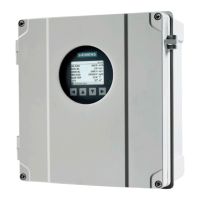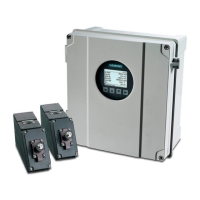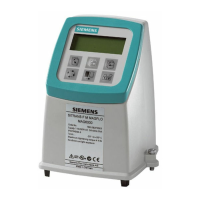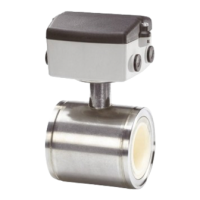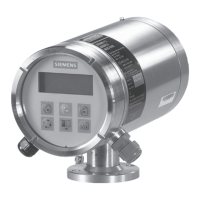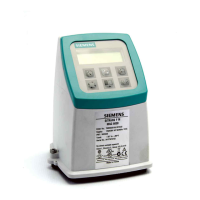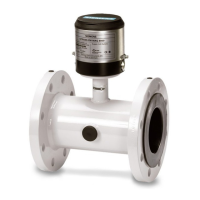7%
6<67(0
75$16'8&(57(67%/2&.
3,3(2'00
02'(5()/(&7
6,=(&
① Sensor under test ⑤ Sensor under test
② Sensor clamping screw ⑥ Label shows data entry parameters for size C. Size D
sensor parameters appear on a label on the other side
plate.
③ Sensor clamping brackets ⑦ This arrow points to the surface associated with the sen‐
sor size identified on the label.
④ Slide sensors firmly against sensor
pin-stops.
⑧ This example shows testing for size C. Rotate brackets
180° to mount size D sensors.
⑨ Sensor testing surface for C size sensor.
1. Identify the side of the simulator that applies to the sensor size under test. Rotate the
clamping bracket as required to mount sensors on the test surface.
2. Using a coupling compound, preferably CC102 (7ME39600UC10) or CC128
(7ME39600UC20), mount the sensors on the pipe simulator as shown above. Slide each
sensor until it presses against the pin-stop. Use the clamping screws to hold the sensors in
place.
3. Connect sensor cables between each Sensor and the meter connectors for the path under
test. The Up and Down cable orientation is not important.
Note
The next step in this procedure will automatically overwrite any existing sensor setup
parameters.
4. Sign in as Expert (default password 2834).
5. Access the test block setup wizard, Setup Sensor Configuration of test blocks, then
select the corresponding FS200 Universal sensor size from the dropdown list. The device
will automatically configure the parameter required for operation on the selected sensor and
test block.
Upon the completion of the test block setup wizard, the flowmeter should report a sound
velocity within the range of approximately 1350 to 1700 m/s with an Rx gain value of no more
than 45 dB. The Rx signal can also be evaluated for proper signal characteristics.
Diagnostics and troubleshooting
9.3 Using a pipe simulator test block (A1)
SITRANS FST030 (Modbus)
94 Operating Instructions, 08/2018, A5E37367739-AD

